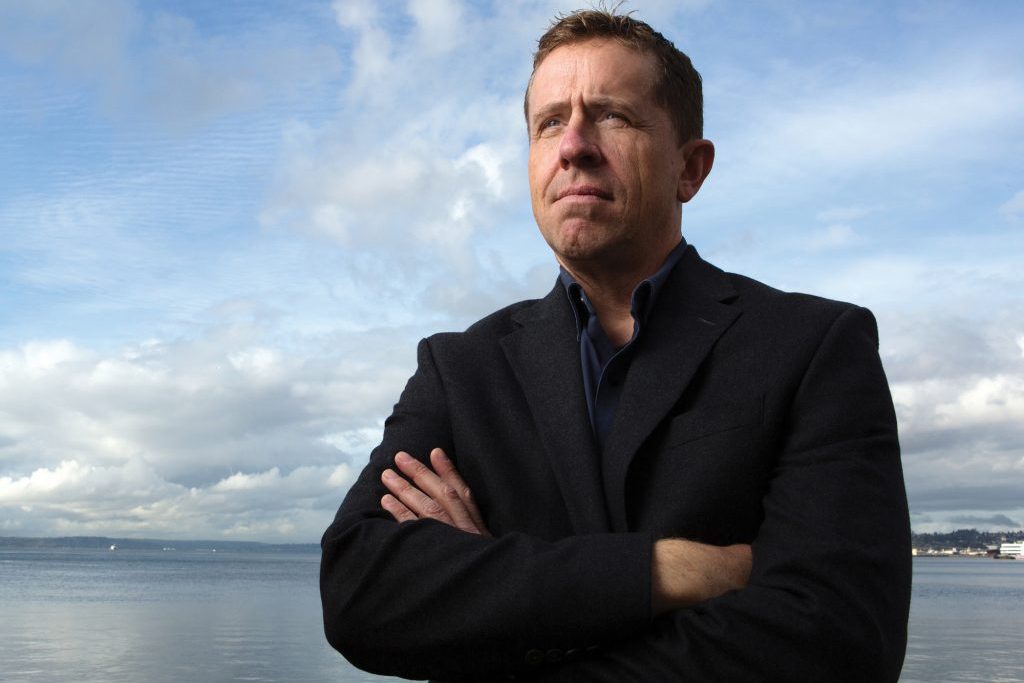It’s been nearly three years since BC Law Magazine last reported on Standing Rock Sioux Tribe v. U.S. Army Corps of Engineers and Dakota Access, LLC. Such is the glacial pace of taking a federal agency to court. The bellwether environmental case is stewarded by Jan Hasselman ’97, a staff attorney in the Seattle office of Earthjustice. On March 25, the United States District Court for the District of Columbia handed his clients their second victory in a row in the fight to mitigate the pipeline’s threat to the Tribe’s reservation.
Under the ruling, the Corps has been ordered to prepare a full environmental impact statement for the pipeline, a step the Tribe has sought since the legal battle began brewing in 2014. As readers may recall, the case boils down to an easement the Corps acquired from the federal government to pump 600,000 barrels a day beneath Lake Oahe. The reservoir sits one mile upstream from the reservation and is part of a river system that serves 17 million people, including the subsistence hunting, fishing, gathering, irrigation, and spiritual/ceremonial needs of the Standing Rock Sioux.
Back in June of 2017, the US District Court concluded that the Corps “did not adequately consider the impacts of an oil spill” into Lake Oahe. Under a remand order, the Corps needed to “reconsider those sections of its environmental analysis” or risk being in violation of the National Environmental Policy Act, which would result in a court-mandated environmental impact study (EIS). The Corps’ remand brief was completed in 2018, and Hasselman’s response absorbed most of 2019.
Fast-forward to this March 18, when the Tribe had its unorthodox day in court. The hearing took place telephonically due to the ongoing public health risk of in-person gatherings. Dakota Access lawyers argued for the right to appear before the judge at the courtroom lectern with Hassleman on the phone from Seattle, but both parties were instructed to make arguments remotely.
“The judge [James Boasberg] switched the order of argument and had the defense go first, which arguably indicates he thought the burden of proof was on them,” says Hasselman. “Then, his first question to them was: ‘Do you think a 2019 precedent set by a DC Circuit US Court of Appeals [in another case—National Parks Conservation Association v. Semonite, 916 F.3d 1075, 1082] changes the analysis [of the law]?’ So, I was very encouraged by the argument. Then, the biggest surprise came when he said, ‘I’ll issue a ruling in a week.’ Normally you can expect to wait for a couple months, so that indicated to me that the decision was essentially already written; he was just fine-tuning it.”
The Court found significant unresolved concerns about the potential impacts of oil spills and the likelihood that one could take place, ordering the Corps to complete an EIS—a process that takes two years and carries an exacting standard of review. Briefs from both sides on whether to shut down the pipeline while the EIS is pending are due on May 27, with a decision expected sometime after that; possibly within weeks.
“The order for an EIS is a consequential action,” says Hasselman. “I could see the case going up to the DC Circuit or even the US Supreme Court.”
In a case that’s had more twists and turns than a double helix, the federal District Court will have to consider yet another factor in deciding the shutdown issue: the economic consequences on domestic oil producers of ceasing the flow of oil from the main conduit of the Bakken oil formation in North Dakota, where a sizable amount of US crude oil is produced. The volatility of international oil markets caused by the current global health emergency will make that calculus by the Court even more complex.
Photo: Jan Hasselman courtesy of Earthjustice


